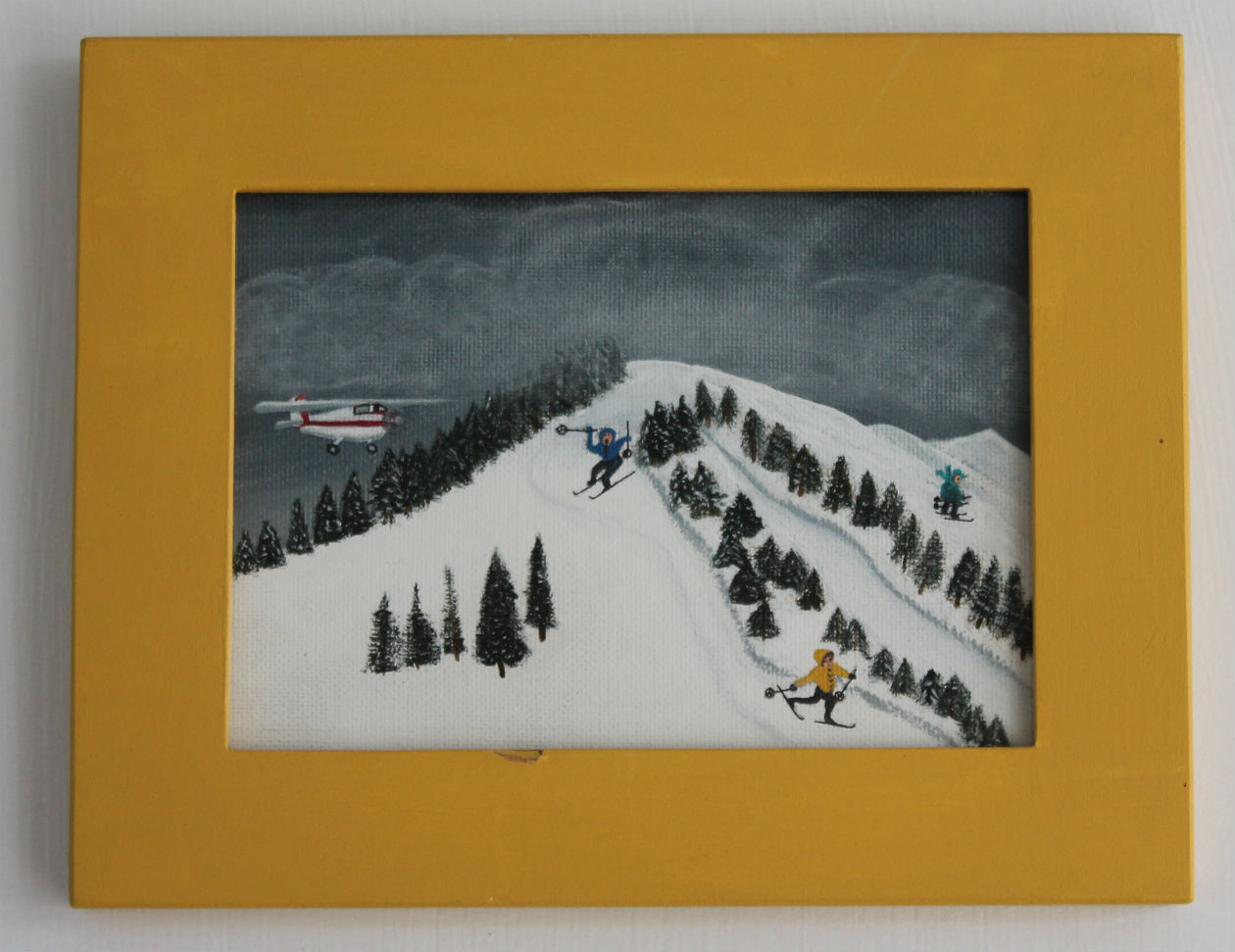Dr. Eleanor McQuillen’s Crime Scene Painting Flying Into Killington
This crime scene painting offers a real departure from the previous crime-scene paintings on a number of different levels. First, the title is taken word from word from my mom’s files. This straightforward description has all of the double meaning I typically strive for when I title her works. This painting captures the January, 1991 airplane crash into the Killington Mountain Ski Resort. Certainly the title wouldn’t had the same word play had they crashed into Mount Pisgah.
A second big difference from most of her paintings is that this is the scene prior to the accident. This is understandable since airplane crashes in Vermont typically get lost in the trees. The 1944 crash of the B-27 Bomber into Camel’s Hump offers a case in point. Even though there is still a bus-sized section of wing just off the hiking trail, it is still easy to miss in the dense foliage.
The third, and most important difference is, this was a crime scene she didn’t have to investigate—no one died. When the plane fell off the radar, the proper authorities were notified. As day turned to night and freezing rains set in, no plane could be found and many braced for the worse—especially my mother. As you know from previous posts, she preferred to roll up to crime scenes in the comfort of her red Mercedes, not hike deep into the woods in the middle of winter. By a stroke of luck the pilot and his passenger avoided death, and my mother avoided what she would have considered a fate worse than death. This crash was well documented in print and TV and it’s interesting to compare news accounts with the details in the painting. This newspaper account describes the survival story. And now the real treat, this episode from William Shatner’s TV series Rescue 911 recreates the accident with footage from the scene and introduces you to the victims and the first responders. This is must see TV.
Even without these news accounts, this piece offers some nice painterly qualities. Note how she depicts the icy mist that swirls against the cold grey sky and obscures details at the top of the mountain. The open mouth of the blue skier captures the detail that the victims could hear the skiers near by. Maybe the gold frame around this painting is a symbolic halo. Certainly, the angels were looking down on this crime scene.
Next week we conclude the series with the crime scene painting Spouse Vengeance Slaying.
Adopt a detective’s perspective when looking at this painting and use three simple questions to frame a class discussion.
- What is going on in this picture?
- What do you see that makes you say that?
- What more can we find?
Decide if and when to share the title of the painting as it may guide, or overly influence, the way students view the work. You will also need to decide if it is beneficial to share the back story that this is a crime scene painting and is painted by one of the crime scene investigators for her child as a way to share life’s thoughts and lessons.
You can also discuss that crime scene investigators study these kinds of accidents to figure out how to keep them from happening again. Ask, “What might you do to keep this accident from happening again?” Possible answers: Provide some kind of warning that this is a dangerous intersection. Remind skiers to wear helmets. Remind skiers that while the sensation of speed can be exhilarating it also makes an activity, including riding a bike and a car, more dangerous.


Comments are closed, but trackbacks and pingbacks are open.